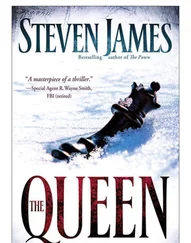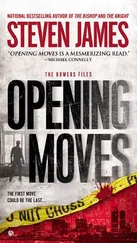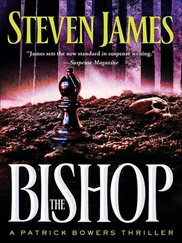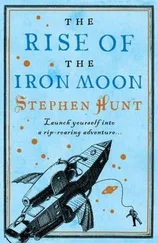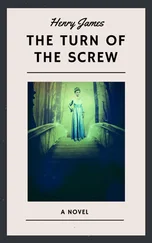Steven James - The Rook
Здесь есть возможность читать онлайн «Steven James - The Rook» весь текст электронной книги совершенно бесплатно (целиком полную версию без сокращений). В некоторых случаях можно слушать аудио, скачать через торрент в формате fb2 и присутствует краткое содержание. Жанр: Полицейский детектив, на английском языке. Описание произведения, (предисловие) а так же отзывы посетителей доступны на портале библиотеки ЛибКат.
- Название:The Rook
- Автор:
- Жанр:
- Год:неизвестен
- ISBN:нет данных
- Рейтинг книги:3 / 5. Голосов: 1
-
Избранное:Добавить в избранное
- Отзывы:
-
Ваша оценка:
- 60
- 1
- 2
- 3
- 4
- 5
The Rook: краткое содержание, описание и аннотация
Предлагаем к чтению аннотацию, описание, краткое содержание или предисловие (зависит от того, что написал сам автор книги «The Rook»). Если вы не нашли необходимую информацию о книге — напишите в комментариях, мы постараемся отыскать её.
The Rook — читать онлайн бесплатно полную книгу (весь текст) целиком
Ниже представлен текст книги, разбитый по страницам. Система сохранения места последней прочитанной страницы, позволяет с удобством читать онлайн бесплатно книгу «The Rook», без необходимости каждый раз заново искать на чём Вы остановились. Поставьте закладку, и сможете в любой момент перейти на страницу, на которой закончили чтение.
Интервал:
Закладка:
I examined the room. “But this room isn’t extensively damaged, never reached full involvement. Not like the point of origin for the other fires.”
“That’s because he used a different accelerant this time, probably gasoline.”
Lien-hua looked confused. “How can you tell?”
“Gasoline flares up, burns very rapidly,” Aina said. “It devours all the oxygen in the room before the rest of the materials in the room become hot enough to ignite. It’s a sloppy, beginner’s way to start a fire. In the movies, arsonists slosh gasoline around, toss in a cigarette, and voom! But that’s not how the professionals do it. To start an effective fire, you need a fuel package that’ll burn longer.”
“Lien-hua,” I said, “are you sure our arsonist is working alone?”
“Not certain,” she said. “But up until now, that’s where everything has pointed.”
“Do we know anything about the accelerants for the other fires yet?” I asked Aina.
She shook her head. “Not yet. Chromatograms were inconclusive. We’re tracking purchases of acetone and methylated spirits in the days prior to each fire, but so far, nothing solid.”
I scanned the room. Out the window, I had a direct sight line to the street corner that John Doe had rounded before he jumped onto the hood of my rental car. I gazed at the fire’s point of origin again. “The fire’s placement in the room isn’t right either,” I said.
“On the flight from Denver, I looked over the building diagrams that you sent me, Aina-the ones from the other fires-and our arsonist likes to use vents, stairwells, windows, the natural airflow through a building, to keep feeding his fires oxygen. But the guy last night, he started the fire along an exterior wall, with no consideration of airflow.” I pointed. “He didn’t even open the window.
Taking into account the change in accelerant and inefficient point of origin-”
“It’s not the same guy,” Lien-hua said.
“That’s what I’ve been thinking too,” said Aina.
The evidence at this scene certainly seemed to point to a different offender, but I wasn’t convinced. “And yet this home’s location makes perfect sense in relationship to the other fires. That’s what’s got me. If it wasn’t him, how did the guy last night know to start the fire on this street?”
“Coincidence?” Aina said.
“I don’t believe in coincidences,” I said.
She tapped at her phone. “I really have to go. We found the person who called in the fire. I’d like to speak to her. I’ll get back in touch with you.”
Lien-hua and I nodded, Aina left, and for a few minutes Lien-hua and I looked around the room. Finally, I said, “I’m really stumped here. We have the right kind of crime, the right location, and timing that fits the escalating progression of the series, fourteen fires by the same guy, and now, suddenly, a different arsonist shows up?”
“It doesn’t fit, does it?”
“No. Either that, or I’m missing a big piece of the puzzle.” “OK. Let’s walk through it,” she suggested. “Reconstruct what happened.”
“Good,” I said. “Based on what we know, there’re two arsonists, so for now let’s just say it’s the two of us.”
“OK,” she said. “It’s just the two of us.”
The way she said those words gave me pause. I wanted to ask her something, wasn’t sure how to phrase it. “Wait,” I said. “Before we start. There was something you wanted to tell me last night.
Outside Tessa’s door.”
“Now’s not the time, Pat,” she said.
“Is it Tessa? Is something wrong?”
“No, no, no. Nothing like that. I just need to sort some things through. I shouldn’t have said anything. Let’s just forget it, OK?”
I wanted to press her, get her to tell me more, but knew it would only make her less willing to open up. “OK,” I said. “Fair enough.”
Then it was back to business. “Now,” she said. “Let’s reconstruct this crime.”
18
Lien-hua mimed splashing gasoline across the floor, then lighting it. “So we’re inexperienced, we don’t know what we’re doing. We start the fire, then what? Maybe wait a few minutes to make sure it’s burning?”
“Yes, I think so.”
“Then where do we go? How do we get out?”
I studied the room. “Well, we don’t want to get caught… You can see the front door too easily from the intersection and from the tobacco store across the street. The front would be too risky.”
“So, we head for the back door.” Lien-hua led the way through the house. Really, the home was small enough so that only one route made sense. As I followed her, I carefully examined the blackened floor to see if the offender had left any shoe prints or impressions in the soot, but there were at least six different tread mark patterns visible, in addition to the ones that matched the boots I’d borrowed.
The prints must have been left by the firefighters or the MAST officers who’d processed the scene. It would take a lot of checking to figure out if one of the shoe prints didn’t really belong. I gazed at them carefully.
“What about the gas can?” I said. “Would we leave it here or take it with us?”
“We’re new to arson, so we might not have thought about that before starting the fire… Or maybe we’re careless and we tossed it outside… Of course, we might have used a plastic canister and then tossed it onto the fire… Or we might have-” “I guess we’re not ready for that question yet,” I said. “Too many mights. We need more evidence-”
“And less conjecture,” she said, finishing my thought.
“Oh. Have I said that before?”
“Once or twice.”
With my gloved hand, I eased the back door open and noticed the yellow crime scene tape hanging limp in the breezeless morning, encircling the house’s property at about a four-meter perimeter.
Lien-hua must have seen me staring at the location of the yellow tape, because she said, “Aina told me her criminalists already processed the scene, everything inside the tape. Didn’t find anything.”
Most law enforcement agencies use the terms “crime scene investigative unit,” or “forensic science technician,” but some places, and especially overseas, the term “criminalist” is more common.
Either way, I’m usually amazed not by how much evidence the teams notice but by how much they miss.
“Did they check outside the tape?” I asked.
“Outside it?”
I pointed at the yellow police tape. “Don’t you find it a little too convenient that the crime scene just happens to be exactly the same size as the area encompassed by these telephone poles?”
“They were handy.”
“Yes, they were. But a crime scene is defined by the evidentiary nature of the crime and the physical characteristics of the site itself, not the location of the nearest telephone poles.” Oops. I’d started lecturing. I needed to watch that.
“Good point.”
I peered beyond the caution tape to see if our inexperienced arsonist might have dropped the gas can on the hill. “You’d be amazed how many times I’ve found a murder weapon only a few meters outside of the police tape. But people rarely think to look there because it’s not part of ‘the crime scene.’” She joined me beyond the tape, on the dusty hill that climbed at a slow slope away from the house. “So the tape actually hinders the investigation,” she said thoughtfully. “We don’t see the evidence because we’re looking in the wrong place. It’s a blind spot.”
A blind spot.
Yes.
“Lien-hua, if we were the arsonists, where did we park?”
She pointed. “Other side of that hill?”
I jogged to the top. My mind was spinning. “Poor access. Too many streetlights, too much traffic. And we didn’t park to the west of the house over there, since that home is too close-the porch is only ten or twelve meters away. So, maybe we parked in the alley off to the east.”
Читать дальшеИнтервал:
Закладка:
Похожие книги на «The Rook»
Представляем Вашему вниманию похожие книги на «The Rook» списком для выбора. Мы отобрали схожую по названию и смыслу литературу в надежде предоставить читателям больше вариантов отыскать новые, интересные, ещё непрочитанные произведения.
Обсуждение, отзывы о книге «The Rook» и просто собственные мнения читателей. Оставьте ваши комментарии, напишите, что Вы думаете о произведении, его смысле или главных героях. Укажите что конкретно понравилось, а что нет, и почему Вы так считаете.



